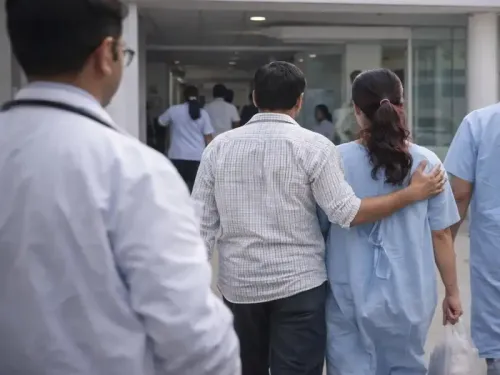Can a New Smart Surveillance System Control Mosquito-Borne Diseases?

Synopsis
Key Takeaways
- Innovative mosquito surveillance system developed in China.
- Real-time monitoring aids in disease control.
- Achieves a 40% reduction in mosquito captures.
- Combines multiple technologies for high efficiency.
- Similar advancements are being made in Hong Kong.
New Delhi, Aug 11 (NationPress) In the midst of a significant chikungunya outbreak, researchers from China have made an impressive advancement in combating mosquito-borne illnesses by creating an innovative vector mosquito surveillance system that provides scientific strategies for effective disease management.
Led by Chen Xiaoguang, a professor at Southern Medical University, this surveillance technology has been implemented in various communities throughout Guangdong Province, as reported by Xinhua news agency.
Precise monitoring is crucial since diseases like chikungunya are mainly transmitted through bites from Aedes mosquitoes.
Conventional monitoring methods have their shortcomings.
“Traditional mosquito traps and nets only capture non-blood-fed mosquitoes, while oviposition traps focus on blood-fed egg-layers,” Chen noted.
“Our innovation utilizes a coordinated dual-device system for real-time, efficient monitoring,” he added.
The automated monitors feature human-replicating attractants to draw in non-blood-fed mosquitoes, while the smart oviposition buckets employ miniature water pools to track blood-fed Aedes albopictus mosquitoes, achieving an efficiency rate that is four times greater than that of standard oviposition traps, according to Chen.
Field tests indicated impressive results. During its initial operational week, the system promptly alerted various zones about unusual spikes in mosquito density and formulated specific intervention strategies.
“Manual trapping resulted in data lags. Now, with real-time cloud-based notifications, grassroots disinfection efforts have significantly sped up,” Chen explained.
Post-deployment monitoring revealed a nearly 40 percent reduction in adult mosquito captures in critical areas.
This technology is currently in use across several locations in Foshan City of Guangdong and represents a major leap forward. “Our team is dedicated to enhancing mosquito-borne disease prevention through technological advancements,” Chen stated.
In a related effort, researchers at Hong Kong’s Lingnan University have launched the first live GeoAI (Geospatial Artificial Intelligence) platform aimed at controlling mosquito-borne diseases. This platform combines Geographic Information Systems (GIS) with Artificial Intelligence of Things (AIoT) to offer real-time and predictive mosquito risk assessments.
The platform is actively being used at Kwun Lung Lau in Kennedy Town, with plans to expand to eight additional mosquito monitoring sites.
It provides frontline property management teams with up-to-date data to enhance mosquito control activities and mitigate the risks associated with diseases such as chikungunya and dengue fever.










